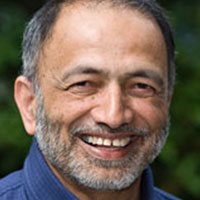A major announcement in the Congress manifesto, in the ongoing parliamentary election, is the minimum income guarantee proposal – Nyuntam Aay Yojana (NYAY). In this symposium, Bharat Ramaswami (Ashoka University), Jean Drèze (Ranchi University), Pranab Bardhan (University of California, Berkeley), S. Subramanian (Indian Council of Social Science Research), Ashwini Kulkarni (Pragati Abhiyan), Karthik Muralidharan (University of California, San Diego), Pronab Sen (International Growth Center), Niranjan Rajadhyaksha (IDFC Institute), and Maitreesh Ghatak (London School of Economics), weigh in on key issues pertaining to the scheme.
Throughout the successive rounds of this parliamentary election, the extra-ordinarily generous cash transfer scheme ‘NYAY’1 (Nyuntam Aay Yojana) announced in the Congress manifesto has continued to generate much discussion. It promises to pay Rs. 72,000 per year to the bottom 20% of all households. On one hand, the scheme has been criticised as outlandish, unrealistic, and not implementable. And on the other hand, Congress leaders as well as some prominent economists have defended the scheme as realistic and even warranted. We thought that it would be good to organise a symposium on this subject and with this in mind we approached nine experts with somewhat different perspectives. All of them have thought about the desirability as well as the implementability of the proposed scheme. We gave them the following 10 commonly raised questions and asked them for their thoughts. A few of the invited contributors chose to present their thoughts as short essays while the rest answered our questions in Q & A format.
List of Questions for a Symposium on NYAY:
- Can you explain why NYAY is necessary when we already have so many other poverty alleviation schemes? Why should we not just increase the budget for the existing schemes?
- Do you think that the money would be better utilised if instead it is used to improve the existing public education and health services? Or, have we simply given up on trying to make public education and health delivery functional?
- Would you prefer an alternate scheme that distributed the same amount of money through cash transfers over a larger number of households by reducing the amount to each recipient? If yes, why?
- Do you have any concerns about the fiscal burden of this extra expenditure? Do you think that the existing tax rates would have to be changed or the existing subsidies eliminated to accommodate NYAY?
- What would you say to people who are worried that an infusion of cash would increase demand but not the supply and cause a price rise?
- Which of the existing subsidies from the Central government are dispensable and substantial enough to be considered for elimination?
- Targeting the bottom 20% seems to be a herculean task. Which data can the governments use to identify the bottom 20%? What sort of targeting mechanism would you suggest?
- The proposed scheme is bound to generate perverse incentives for a significant part of the population. They would try to show that they are a lot poorer than they are or even to lower their incomes in order to qualify. How would you construct the scheme to minimise the damage from this obvious problem?
- How would you ensure that this scheme does not turn out to be a Trojan horse to weaken or destroy the existing schemes like the National Food Security Act (NFSA) and Mahatma Gandhi National Rural Employment Guarantee Act (MNREGA)?
- The deficiencies in the existing poverty alleviation schemes stems from weak State capacity. Will NYAY also not be hampered by the same?
Four concerns around cash transfer policies - Bharat Ramaswami (Ashoka University).
Doing justice to NYAY - Jean Drèze (Ranchi University).
The case for a universal basic income supplement - Pranab Bardhan (University of California, Berkeley).
The potential macroeconomic impact of NYAY – Niranjan Rajadhyaksha (IDFC Institute).
Getting targeting right - Karthik Muralidharan (University of California, San Diego).
Not long-term solution to poverty but useful ‘first-aid’- Maitreesh Ghatak (London School of Economics).
Tool for addressing multidimensional poverty - Ashwini Kulkarni (Pragati Abhiyan)
Prioritise expansion of National Social Assistance Programme - Pronab Sen (IGC India).
Crucial to look into taxes for financing - S. Subramanian (Indian Council of Social Science Research).
Note:
- Nyay is Hindi for ‘justice’.




 01 May, 2019
01 May, 2019 




Comments will be held for moderation. Your contact information will not be made public.